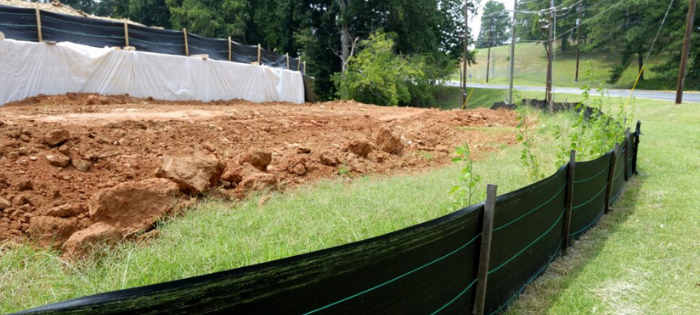
Environment
Comments: No Comments
Spring is here…warmer temperatures, melted snow, anticipated rain, and, potentially, elevated flood warnings. Spring thaw is a critical time to evaluate potential runoff impacts from storm waters and to ensure compliance with regulatory requirements for storm water management.
Permit Requirements
According to the U.S. Environmental Protection Agency (EPA), “The National Pollutant Discharge Elimination System (NPDES) permit program addresses water pollution by regulating point sources that discharge pollutants into the waters of the United States.” NPDES permits are issued by states that have obtained EPA approval to issue permits or by EPA Regions in states without such approval.
Businesses with specific SIC/NAICS codes are required to have an NPDES permit or a No Exposure certification in place to help ensure protection of the nation’s surface waters. If a business is required to have an NPDES permit, they are also required to have a Storm Water Pollution Prevention Plan (SWPPP) for their site.
What Is a SWPPP?
A SWPPP is a site-specific, written document that is required to comply with a storm water general permit. The primary goal of the storm water permit program is to improve the quality of surface waters by reducing the number of pollutants potentially contained in the storm water runoff. The SWPPP describes:
- Potential sources of storm water pollution at the site
- Activities to control sedimentation and erosion
- Practices to reduce pollutants in storm water discharges from the site
- Procedures to comply with the terms of the general permit and Clean Water Act (CWA) requirements
SWPPPs are intended to be “living” documents that are updated to reflect changes at the site. With spring thaw and rains in the forecast, it is important to review the SWPPP and any Best Management Practice (BMP) strategies to ensure the site is effectively managing storm water and meeting permit and regulatory requirements.
SWPPP: Key Parts and Pieces
The SWPPP identifies potential sources of pollution that may reasonably be expected to affect the quality of storm water discharges associated with activity at the facility. The plan also describes the implementation of practices that are to be used to reduce those pollutants. The SWPPP, which should be prepared in accordance with good engineering practices, documents the following:
- Summarizes major activities conducted at the facility.
- Inventories exposed materials and summarizes storm water sampling requirements for the facility.
- Identifies potential source areas of storm water contamination and significant polluting materials.
- Identifies Best Management Practices (BMPs) for facility activities.
- Identifies impacts of BMPs.
- Identifies the individuals who will implement the SWPPP.
- Provides information on required storm water inspections.
- Discusses training requirements.
- Provides a means of recordkeeping for storm water-related documents at the facility.
- Provides a non-storm water discharge assessment.
- Summarizes storm water discharge regulatory applicability and implementation schedule.
- Fulfills the requirements of the General Permit issued to the facility.
SWPPP Development: Best Practices
EPA cites a number of common compliance problems associated with SWPPPs in its SWPPP guide. Based on KTL’s experience, the following best practices can help ensure successful development of the SWPPP and implementation of the overall storm water pollution program to avoid those pitfalls.
- Determine whether you need a SWPPP. Many facilities do not realize they need a SWPPP. Others may use a generic template to fulfill the need. To be effective, SWPPPs should be customized to address site-specific operations.
- Implement control measures. The SWPPP identifies control measures for managing storm water. It is vital that those control measures outlined in the SWPPP are the control measures that are actually being used at the site. As operations change and control measures change, the SWPPP must be updated.
- Keep a copy onsite. A copy of the SWPPP—hard copy or electronic—must be maintained onsite at all times in case of a regulatory inspection.
- Authorize the SWPPP. A responsible facility representative must sign and authorize the current version of the SWPPP.
- Identify and train your storm water pollution prevention team. The storm water pollution prevention team identified in the SWPPP must be current, familiar with the storm water program, and adequately trained on the program and their respective roles/responsibilities.
- Collect representative visual assessment samples. Visual storm water samples collected from pooled areas onsite are not representative, as these areas tend to concentrate pollutants.
- Cover dumpsters. This is a simple action that is often overlooked. Dumpsters from contract waste collection agencies must be appropriately sealed to prevent leaking oil or other contaminants. Check with your regulatory authority on what is required for outside dumpsters—even those for contractors.
- Control outdoor storage. Keep outdoor storage to a minimum. Store only items specified in the SWPPP in the designated storage areas.
- Maintain inspection and monitoring records. Facilities are required to maintain records of routine site inspections, visual assessments, monitoring results, and implementation of practices required in the permit.
